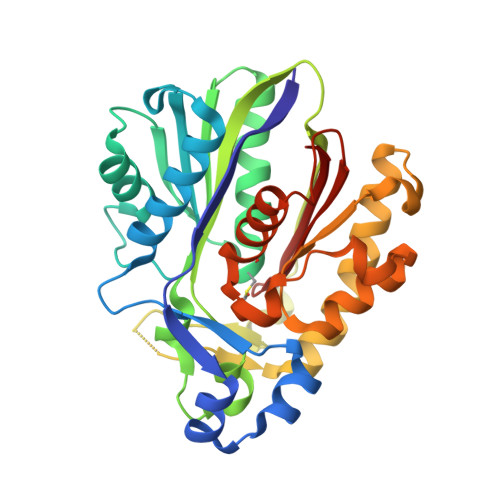Structural Characterisation of the Beta-Ketoacyl-Acyl Carrier Protein Synthases, FabF and FabH, of Yersinia pestis.
Nanson, J.D., Himiari, Z., Swarbrick, C.M., Forwood, J.K.(2015) Sci Rep 5: 14797-14797
- PubMed: 26469877
- DOI: https://doi.org/10.1038/srep14797
- Primary Citation of Related Structures:
4R8E, 4YLT, 4Z19 - PubMed Abstract:
Yersinia pestis, the causative agent of bubonic, pneumonic, and septicaemic plague, remains a major public health threat, with outbreaks of disease occurring in China, Madagascar, and Peru in the last five years. The existence of multidrug resistant Y. pestis and the potential of this bacterium as a bioterrorism agent illustrates the need for new antimicrobials. The β-ketoacyl-acyl carrier protein synthases, FabB, FabF, and FabH, catalyse the elongation of fatty acids as part of the type II fatty acid biosynthesis (FASII) system, to synthesise components of lipoproteins, phospholipids, and lipopolysaccharides essential for bacterial growth and survival. As such, these enzymes are promising targets for the development of novel therapeutic agents. We have determined the crystal structures of the Y. pestis β-ketoacyl-acyl carrier protein synthases FabF and FabH, and compared these with the unpublished, deposited structure of Y. pestis FabB. Comparison of FabB, FabF, and FabH provides insights into the substrate specificities of these enzymes, and investigation of possible interactions with known β-ketoacyl-acyl carrier protein synthase inhibitors suggests FabB, FabF and FabH may be targeted simultaneously to prevent synthesis of the fatty acids necessary for growth and survival.
Organizational Affiliation:
School of Biomedical Sciences, Charles Sturt University, Wagga Wagga, NSW, 2678, Australia.
















